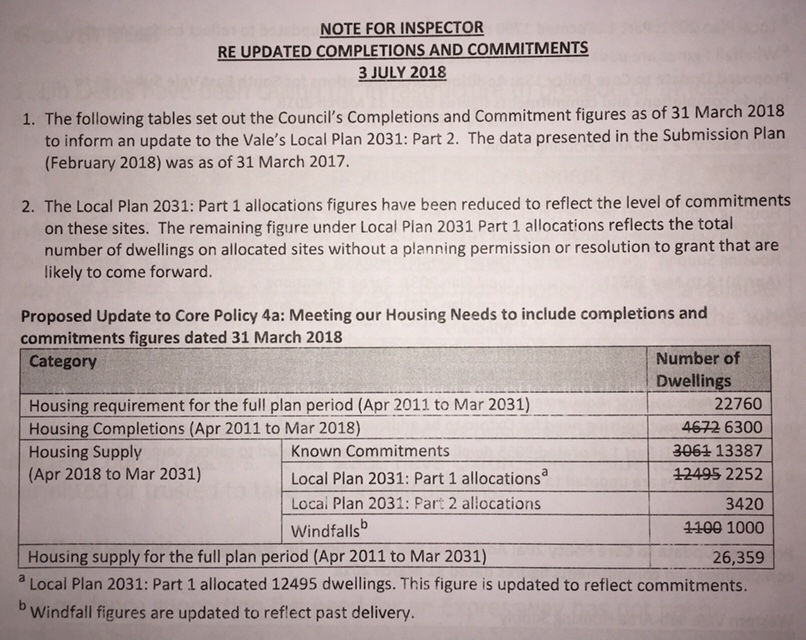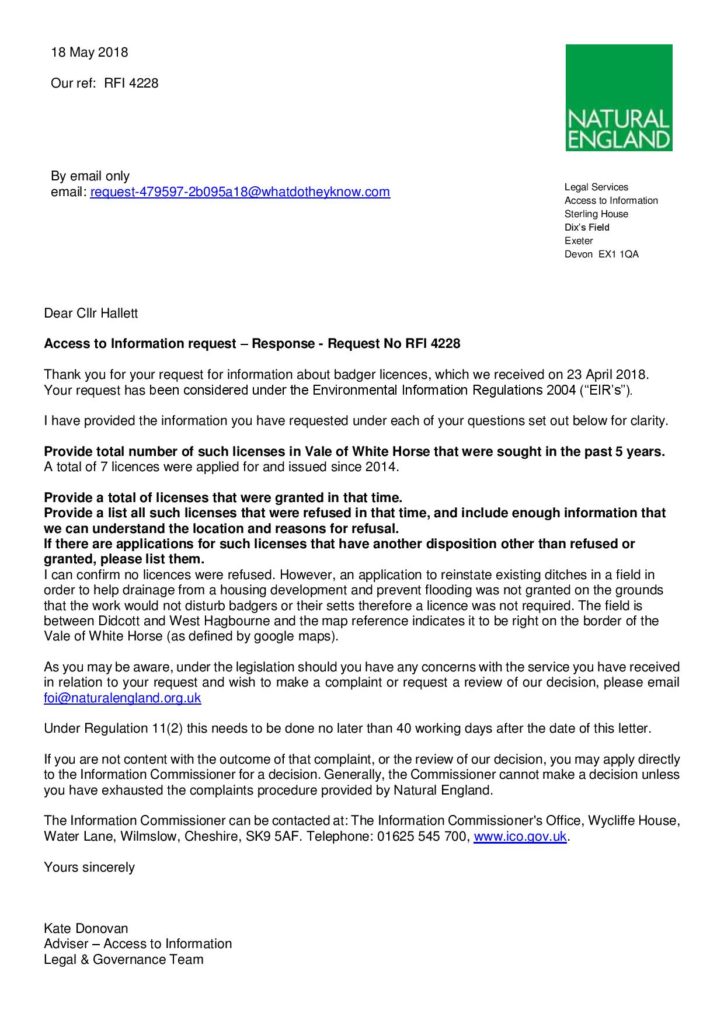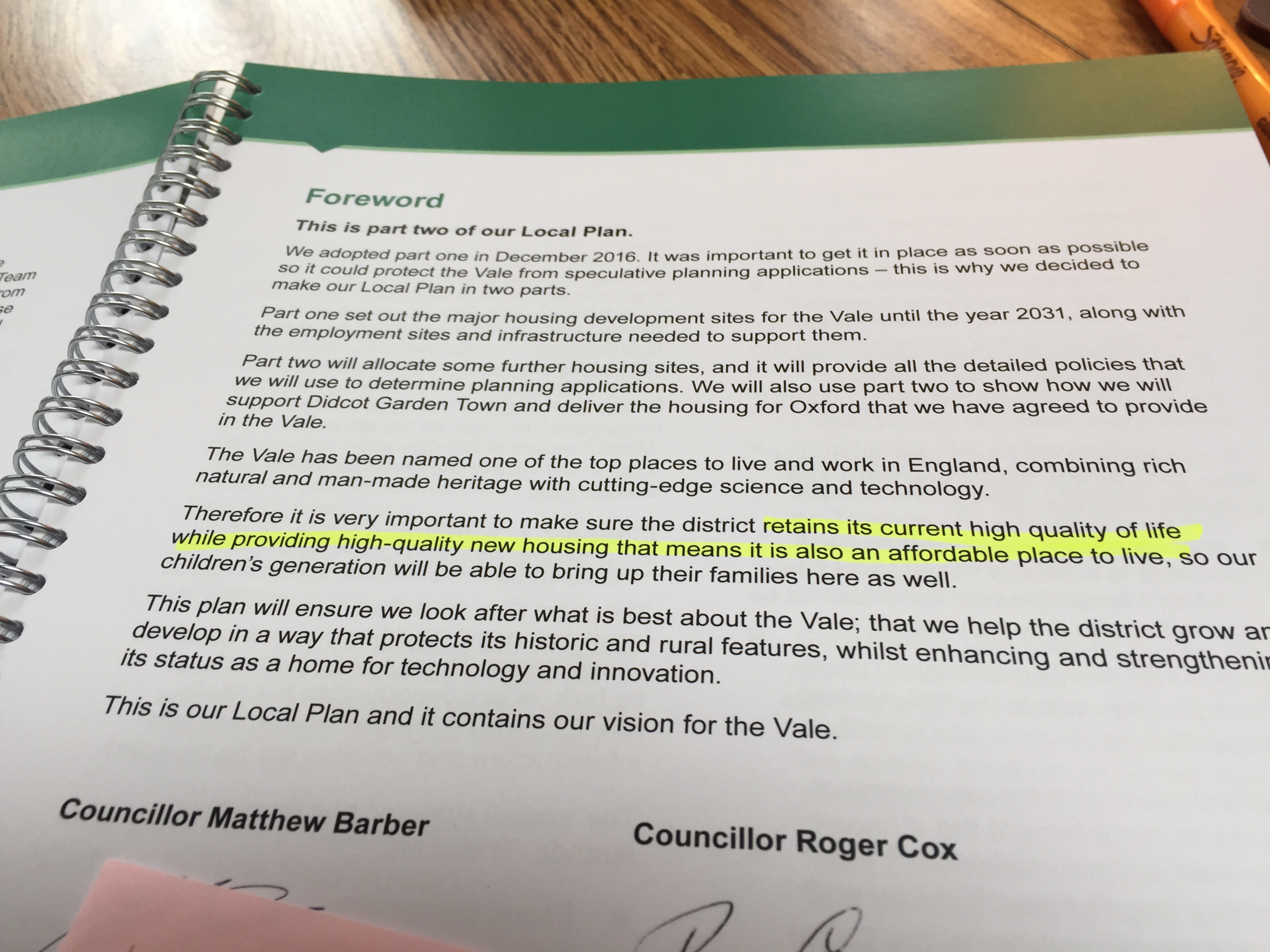Government asked us what we thought of the proposed changes to the National Planning Policy Framework (NPPF) and I responded. Here’s what I told them:
NPPF Consultation May 2018
10 May 2018 D Hallett
I am Cllr Debby Hallett, Deputy Leader of the Liberal Democrat Group, and Chairman of
Scrutiny for Vale of White Horse District Council.
I have four points to make regarding the proposed NPPF:
1. Affordability is the most important thing
2. Housing Delivery Test must ensure it promotes the right behaviours and targets the
right people
3. ‘Sustainability’ needs a robust policy definition
4. ‘Viability Loophole’ needs to be closed
The main thing, as I see it, is that planning policy’s basic assumption is that private
developers can solve our county’s housing crisis. That’s not reasonable. Developers are in
business to make a profit for themselves and their shareholders, not to provide enough
affordable housing for people who need it. It seems clear that the problem won’t be solved
in the way we’ve been going about trying to solve it.
But as long as we have the current systems in place we must put in place policies that are
well-designed and well-considered in terms of the behaviours they promote and how we
can mitigate against unintended consequences. For one example, the Government’s Right
to Buy scheme costs councils money (a loss with every house sold), while at the same time
Government is reducing funding to local government (so there is no money or incentive to
build more council houses). These no-win situations should be fixed, but since they are
unlikely to be, we need well designed policies to encourage development of more houses
that are truly affordable.
Affordability
So long as land values are rising faster than earnings, the problem of not having enough
housing that people can afford will continue. The NPPF says its goal is to increase house
building. I think that’s the wrong goal. The goal should be to increase the stock of decent
houses to rent or to buy, and ensure that the people who need them can afford them.
I recently asked for a report to come to my council’s Scrutiny Committee on the state of
housing affordability locally. It came in Feb 2018; it’s called ‘Houses that People Can Afford’.
The report is here:
http://democratic.whitehorsedc.gov.uk/documents/s43516/Housing%20that%20is%20truly%20affordable%20FINAL.pdf
Vale’s report confirms what’s previously been anecdotal evidence. Here are some main
points:
- The affordability level as defined by Oxfordshire’s SHMA is higher than as defined by
Institute for Public Policy; SHMA uses gross income, IPP uses net income, so income is
considered after tax. Further, the planning framework instead considers affordability as a
percentage of market price. We need a consistent definition of ‘affordability’. Basically, a
useful heuristic might be this: housing is affordable if a household spends 35% or less of its
net income on housing. Affordability should not be based on a percentage of market price,
especially now that those prices are rising faster than household income.
- There was no data available for Vale or Oxfordshire housing specifically (why not?), so we
used data from all of Western England, as the closest comparable area. Housing in Vale is
more expensive though, so the affordability is likely even lower than what’s quoted in the
report.
- We looked at house prices, rents, and income in quartiles. In order to buy a lower quartile
property costing £255,000 in Vale, an income of £57,000 is needed, which is an upper
quartile income. So only the highest income levels can afford to buy the lowest priced
properties. House prices are rising higher than household income.
- Only 18% of ownership options are comfortably affordable at all, and then only to the
highest incomes. (Ownership options are shared ownerships, first time buyers, help to buy,
starter homes etc.) So four out of five ownership options are basically unaffordable to
everyone. This needs to be turned around.
- Help to Buy schemes make houses affordable only to top earners (over £56,000). That
wasn’t the intention of the scheme, as I understand it. Help to Buy is not working here in my
district.
- Private rentals and any sort of ownership tenure are unaffordable to lower quartile
income households. Only social rent is affordable to them, and we don’t have enough social
housing. (Social rents are approximately 50% of market rents.)
And finally, our current policy requires 35% of major sites be affordable homes. But NPPF is
set to change that to 10%. What is the expected impact of that?
Housing Delivery Test
Implementation of this is likely to drop many councils right into the red, with terrible
consequences, even after years of local plan production and monitoring. I think Ministry
should consider what behaviour it is that this HDT is intended to promote. House building
rates are not under sole control of local planning authorities; developers can decide to sit on
land with planning permission to wait for land values to increase, for example. I think this
test is ill-conceived and does not promote the behaviour that’s intended. Instead, it
punishes local planning authorities for results out of their control. I don’t have a solution.
I’m sure there are clever systemic thinkers in the civil service who can define a metric that
does promote more house building, but the HDT as defined in the NPPF isn’t it.
Sustainability
In our council, I’ve seen the concept of sustainability be reduced to a consideration of
whether the proposed development site is within 400 metres of a bus stop. Officers and
committee members consider this is adequate. Even if that were an adequate definition, it’s
unrealistic to rely on it when councils are taking actions that directly reduce local bus service
(such as removing subsidies). Include in the new NPPF a rigorous definition of sustainable
development, so that it’s useful to decision-makers and encourages developers and officers
to consider all the aspects of what is intended by a ‘sustainable housing development’.
Viability Loophole
Developers are in business to make a profit. They know that if they submit a viability report
that shows their profitability will fall to an unacceptable level if they are required to be
policy compliant, the local planning authority will give them a break. In our district we see
developers regularly avoid our policy of a percentage of affordable houses. As it is right
now, the damage is theoretical, since by ‘affordable’ they mean 80% of market vale. As our
study has shown, prices at that reduced level are still unaffordable to all but the very
highest earners. But two things about that: 1) nationally, we must change the way
affordability is defined to consider household income against local housing prices, and 2)
national policies must be put in place to require developers to be policy compliant with
Local Plan policies (once they pass Inspection and are adopted). If that’s a problem, then the
systemic relationship between genuine affordability, project viability and development
policies should be explored.






